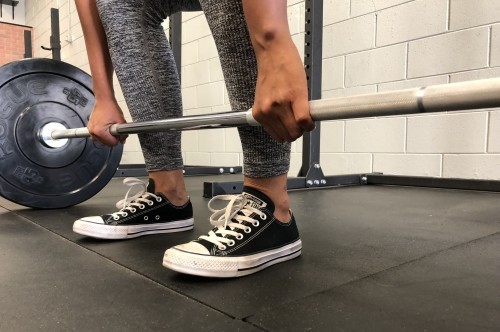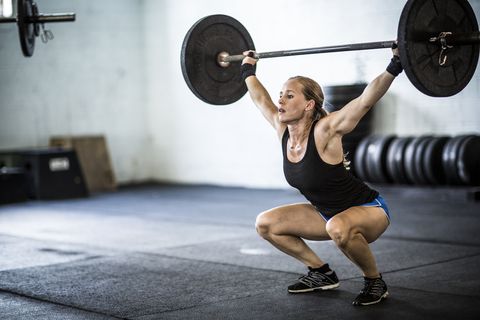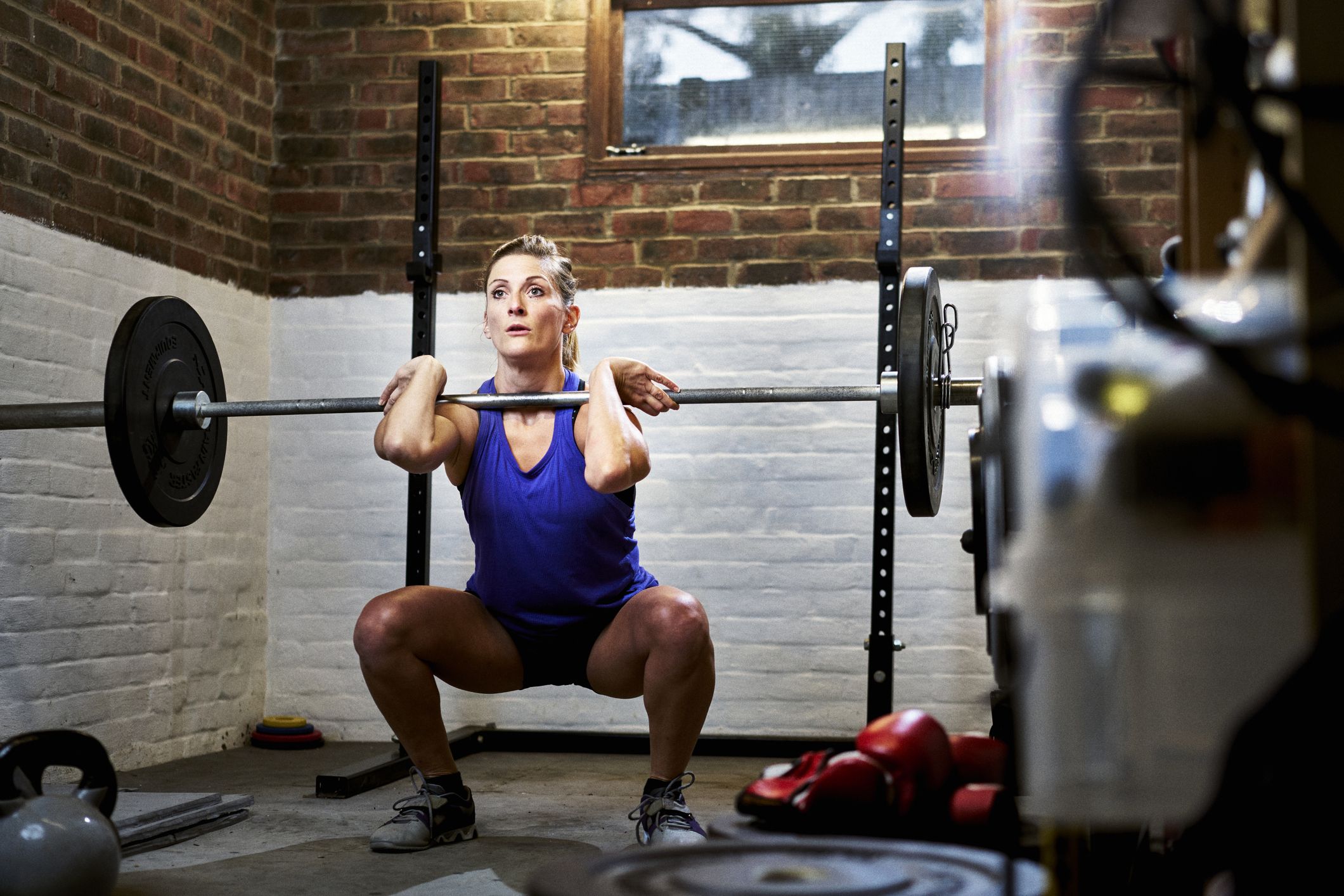Ever spotted a fellow gym-goer pumping iron in Converse shoes and wondered why? You’re not alone. The sight of weightlifters in these classic kicks is more common than you might think. But what makes Converse a popular choice among fitness enthusiasts, and are they really up to the task?
In this guide, we’ll find out the reasons behind this trend and look into the big question: Are Converse good for lifting? From the comfort and durability of Converse shoes to their stylish appeal, we’ll see the mystery surrounding their gym popularity. So, if you’re considering a pair for your next workout, stick around. It’s time to weigh up the pros and cons of lifting in Converse.

Contents
- 1 Are Converse Good For Lifting?
- 2 Are There Any Disadvantages To Wearing Converse For Lifting?
- 3 What Kind Of Converse Are Good For Lifting?
- 4 Frequently Asked Questions
- 4.1 Can I use Converse shoes for weightlifting?
- 4.2 Which Converse model is good for beginners and intermediate lifters?
- 4.3 Are there premium Converse models suitable for weightlifting?
- 4.4 Should I consider alternatives to Converse for weightlifting?
- 4.5 Why is it crucial to choose the right shoes for weightlifting?
Are Converse Good For Lifting?
Converse sneakers, particularly the Chuck Taylor All-Stars, have been a popular choice for weightlifting, especially among those participating in activities like powerlifting and strength training. Here’s why they are considered good for lifting:
1. Flat Soles:
Converse shoes feature flat, thin soles that help to maintain stability and balance. This flatness is crucial when performing lifts such as squats or deadlifts because it allows for even weight distribution across the foot, helping to maximize force generation from the ground up.
2. Minimal Cushioning:
Unlike running shoes, which have thick, cushioned soles to absorb impact, Converse have minimal cushioning. This is beneficial for lifting because it reduces the compression under load. Cushioned shoes can be unstable under heavy weights, which can lead to poor form or even injury.
3. Ankle Support:
High-top Converse provide some degree of ankle support by covering the ankle area. This can give lifters a feeling of security when lifting heavy weights, although the support is not as rigid or supportive as specialized weightlifting shoes.
4. Cost-Effective:
Compared to professional weightlifting shoes, Converse are generally more affordable. This makes them a popular entry-level option for those just starting with weightlifting or those who prefer a versatile shoe that can be used both in and out of the gym.
5. Durability:
Converse sneakers are made with a canvas upper and a rubber sole, which are materials that can withstand the wear and tear of regular lifting sessions. Their durability makes them a long-lasting investment for casual and regular lifters alike.
6. Versatility:
While not specifically designed for weightlifting, the simplicity and style of Converse make them versatile for a variety of activities, including casual wear. This means you can go from the gym to everyday activities without needing to change footwear.
Are There Any Disadvantages To Wearing Converse For Lifting?
Yes, there are several disadvantages to wearing Converse for lifting weights, even though they seem like a convenient option at first. Here’s a breakdown of the key drawbacks:

-
Limited Ankle Mobility: Converse have a flat sole and a design that can restrict ankle movement. This can be a problem for exercises like squats where achieving proper depth requires good ankle mobility. Restricted mobility can lead to improper form and potentially increase your risk of injury.
-
Lack of Arch Support: Converse offer minimal arch support, which can cause discomfort and fatigue during weightlifting, especially when dealing with heavier weights. The lack of support can also lead to imbalances and affect your overall stability.
-
Not Ideal for All Exercises: While Converse might work for squats and deadlifts, they’re not suited for exercises that involve more dynamic movements like lunges or Olympic lifts. The flat sole and lack of lateral support can make these exercises more challenging and potentially risky.
-
Potential for Discomfort: The thin sole of Converse might not provide enough cushioning for your feet, especially during high-impact exercises. This can lead to pain and discomfort in your feet, ankles, and even your knees.
-
Narrow Toe Box: Converse are known for their narrow toe box. This can be a problem for people with wider feet, causing cramping and discomfort during your workout.
What Kind Of Converse Are Good For Lifting?
While not ideal, Converse Chuck Taylor All-Stars, particularly the high-tops, can be an option for weightlifting if you’re just starting out or lifting lighter weights. Here’s why:

- Flat sole: This provides a stable base for exercises like squats and deadlifts.
- Minimal cushioning: Allows for a better feel of the ground and can help with balance.
- High-tops (optional): These offer some extra ankle support, which can be beneficial for some people.
Frequently Asked Questions
Can I use Converse shoes for weightlifting?
Yes, Converse shoes can be used for weightlifting due to their flat soles that provide stability and enhance force transfer during lifts like squats. In particular, they can help mimic barefoot training conditions. However, they might not suit individuals with short heel cords or those prone to heel spurs.
Which Converse model is good for beginners and intermediate lifters?
The Chuck Taylor All Star is recommended for beginners and intermediate lifters due to its affordability and benefits for developing balance during training. Nonetheless, the choice of lifting shoes should align with one’s comfort and stability needs.
The Converse Chuck 70s are among the premium models suitable for weightlifting. They offer enhanced durability suitable for intense training. However, they come with higher price tags compared to regular models.
Should I consider alternatives to Converse for weightlifting?
Yes, while Converse shoes are effective for weightlifting, considering other shoe options might be beneficial. The best alternative shoe would depend on individual biomechanical needs and the intensity of cross-training. Do consider shoes with specialized features.
Why is it crucial to choose the right shoes for weightlifting?
The right weightlifting shoes can improve your stability and performance during training. They also minimize potential injury risks. Therefore, selecting shoes that fit well, offer appropriate support, and suit your budget is crucial. Remember, a shoe that works for someone else may not necessarily suit your individual lifting needs.

Hello, I’m Ravindra. Over the years, I’ve immersed myself deeply into the world of fitness and health, transforming both my body and mind. Writing has allowed me to share my journey, insights, and expertise with those just starting out and seasoned fitness enthusiasts alike. Beyond just routines and diets, I believe in inspiring others to adopt a holistic approach to well-being.
